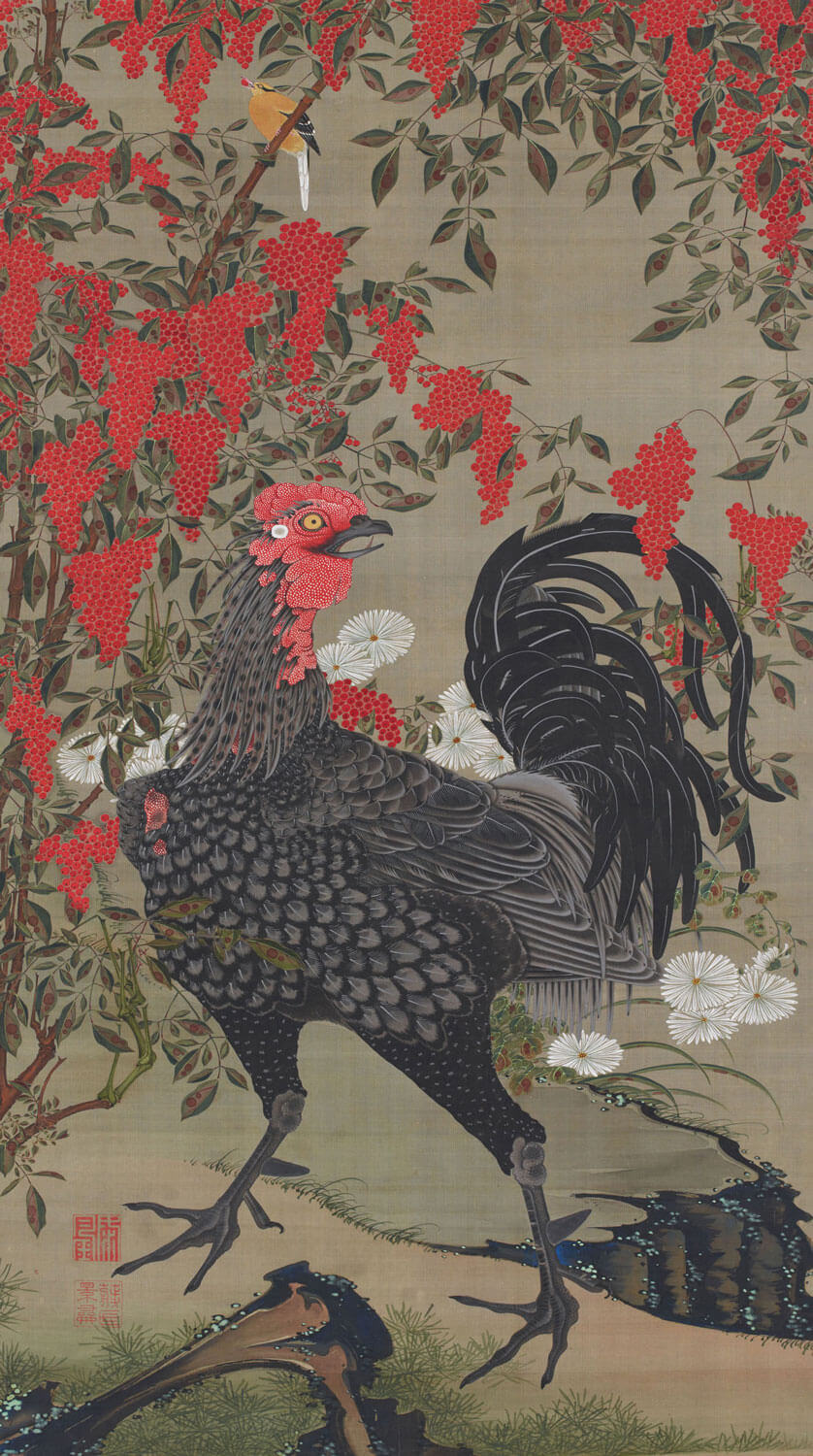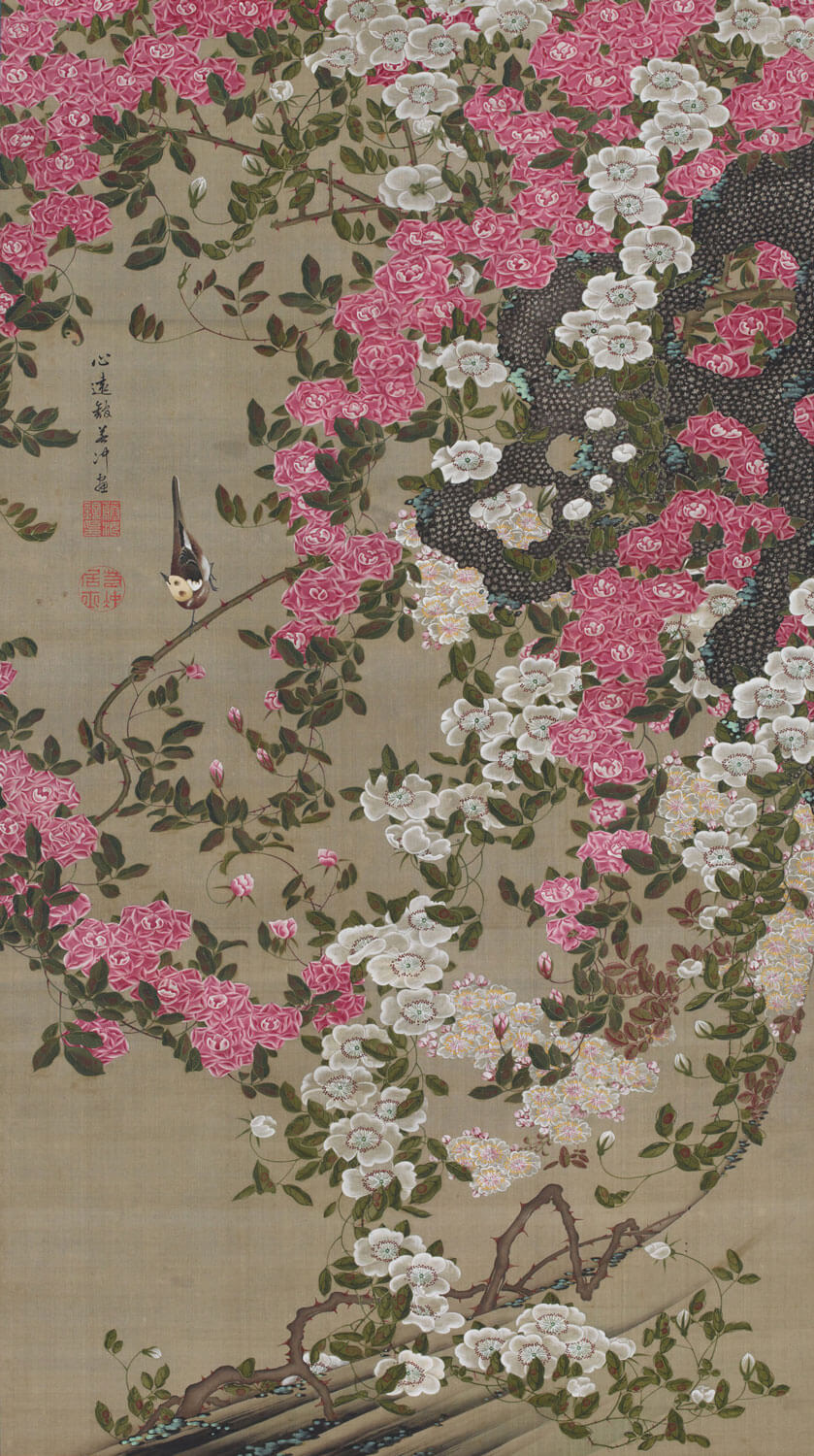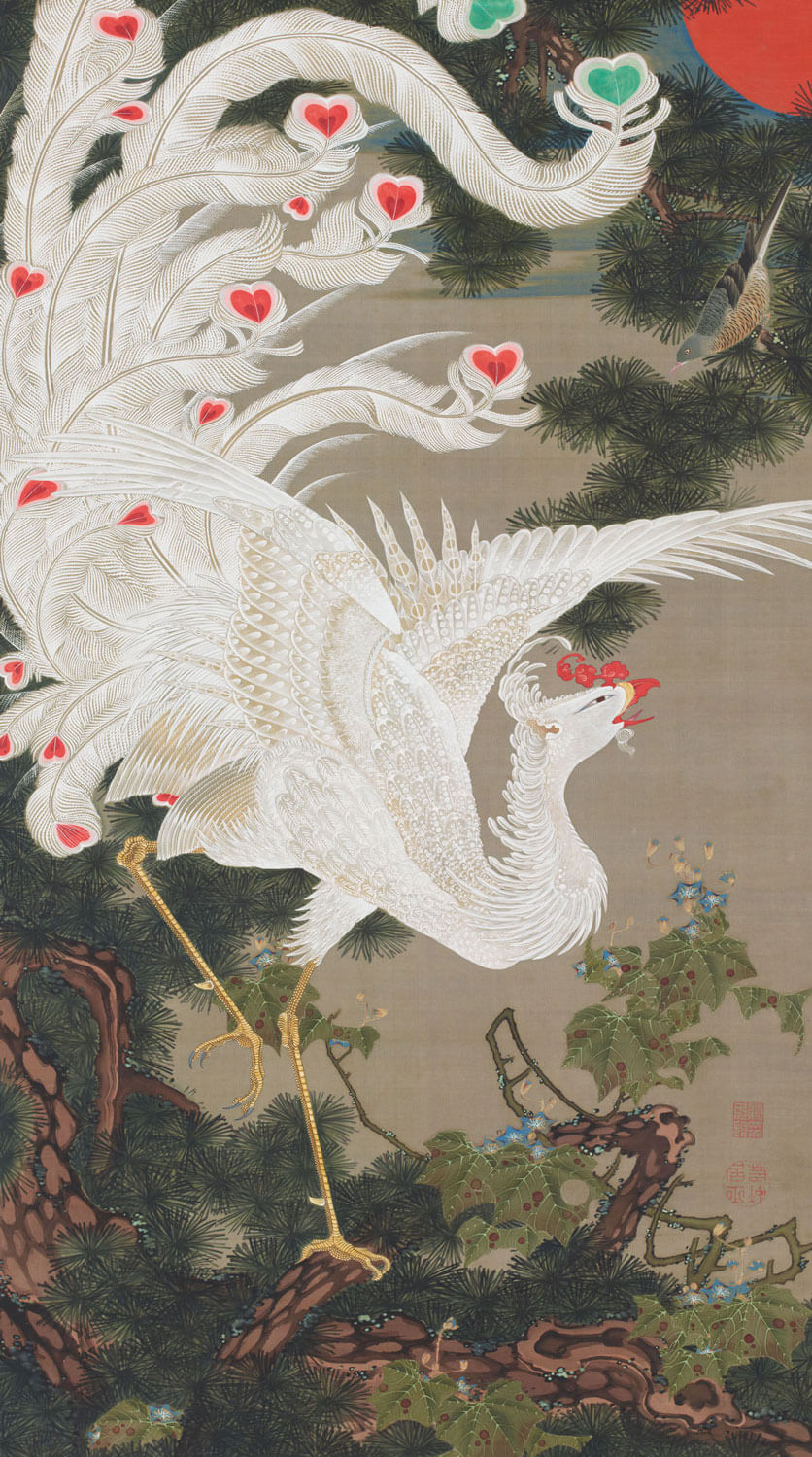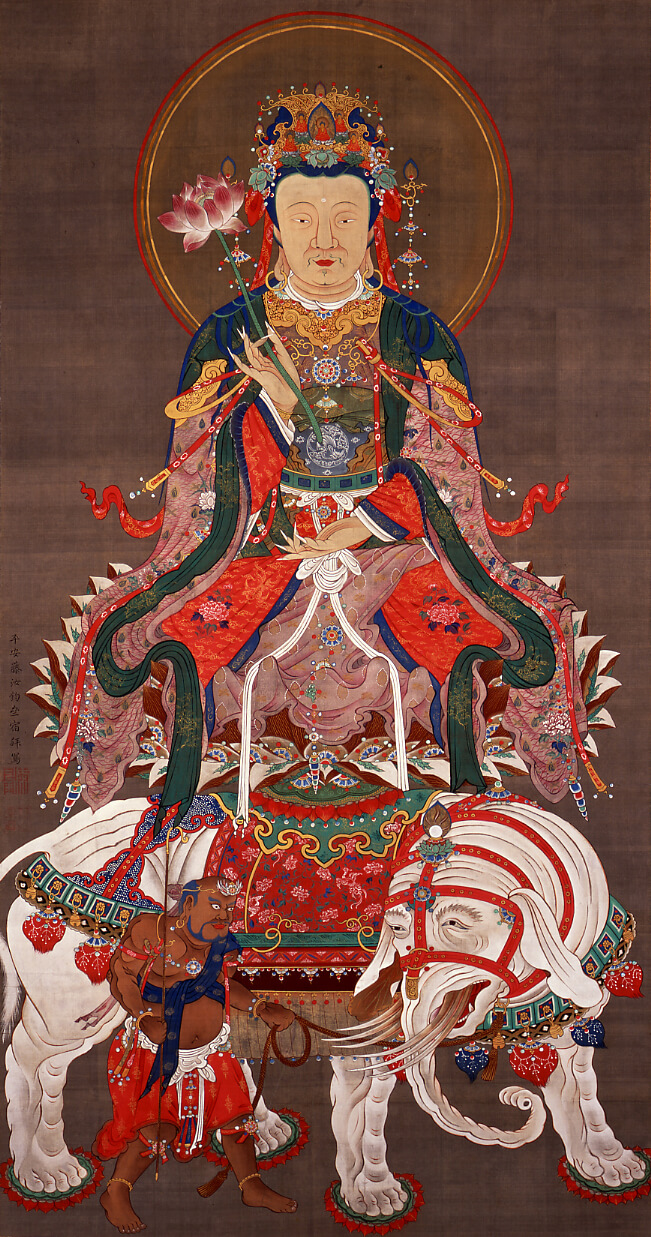Ito Jakuchu’s Naturalist Paintings
From 15 September until 14 October 2018, the Petit Palais showcased the artist's iconic ‘Images of the Colourful Realm of Living Beings.’

Ito Jakuchu, ‘Nandina and Rooster’, Museum of the Imperial Collections (Sannomaru Shozokan), Tokyo, before 1765
Ito Jakuchu was passionate about painting from childhood. While at the Shokoku-ji Zen monastery in Kyoto, he devoted himself to this art, taking inspiration from paintings of flowers and birds from China from the Song dynasty (960-1279) and possibly also the Ming dynasty (1368-1644).
Parisians had the chance to discover his ultimate masterpiece on display at the Petit Palais, Images of the Colourful Realm of Living Beings (Doshoku Saie), comprised of thirty hanging scrolls and completed from 1757 and 1766, which this fervent Buddhist offered to Shokoku-ji temple in Kyoto, the imperial capital of Japan at the time. It’s a collection expressing the vital energy of flora and fauna and is testament to the genius of this self-taught artist.
The Colourful Realm of Living Beings, an exhibition of paintings by Ito Jakuchu, was held from 15 September to 14 October 2018 at the Petit Palais museum in Paris.

Ito Jakuchu, ‘Roses and Small Bird’, Museum of the Imperial Collections (Sannomaru Shozokan), Tokyo, before 1765

Ito Jakuchu, ‘Old Pine and White Phoenix’, Museum of the Imperial Collections (Sannomaru Shozokan), Tokyo, around 1766

Ito Jakuchu, ‘Shells’, Museum of the Imperial Collections (Sannomaru Shozokan), Tokyo, before 1765

Ito Jakuchu, ‘Bodhisattva Samantabhadra’, Shokoku-ji, Kyoto, before 1765
TRENDING
-
The Tattoos that Marked the Criminals of the Edo Period
Traditional tattoos were strong signifiers; murderers had head tattoos, while theft might result in an arm tattoo.

-
Chiharu Shiota, Red Threads of the Soul
Last year, more than 660,000 people visited the retrospective 'Chiharu Shiota: The Soul Trembles' exhibit at the Mori Art Museum.

-
‘Before Doubting Others, Doubt Yourself. Who Can Truly Say a Dish Isn’t What It Used to Be?’
In ‘A Non-Conformist’s Guide to Surviving Society’, author Satoshi Ogawa shares his strategies for navigating everyday life.

-
The Story of Sada Yacco, the Geisha who Bewitched Europe
Described by Dazed magazine as the first beauty influencer, she has been restored to her former glory since 2019.

-
Ito Jakuchu's Naturalist Paintings
From 15 September until 14 October 2018, the Petit Palais showcased the artist's iconic ‘Images of the Colourful Realm of Living Beings’.





